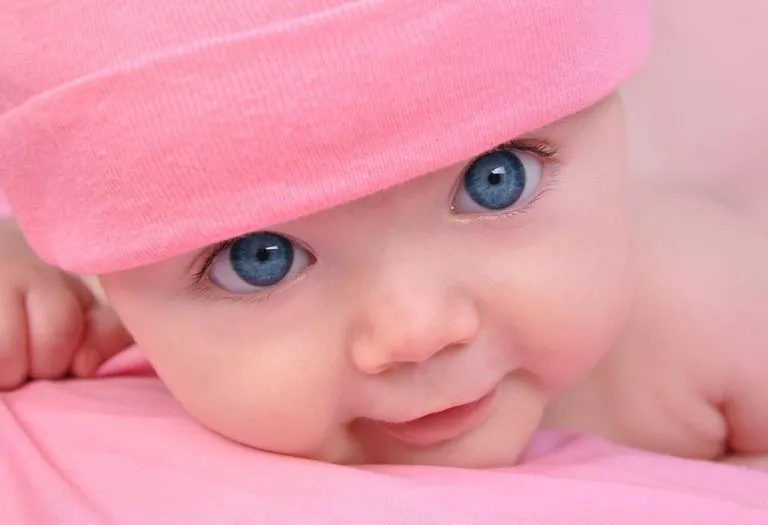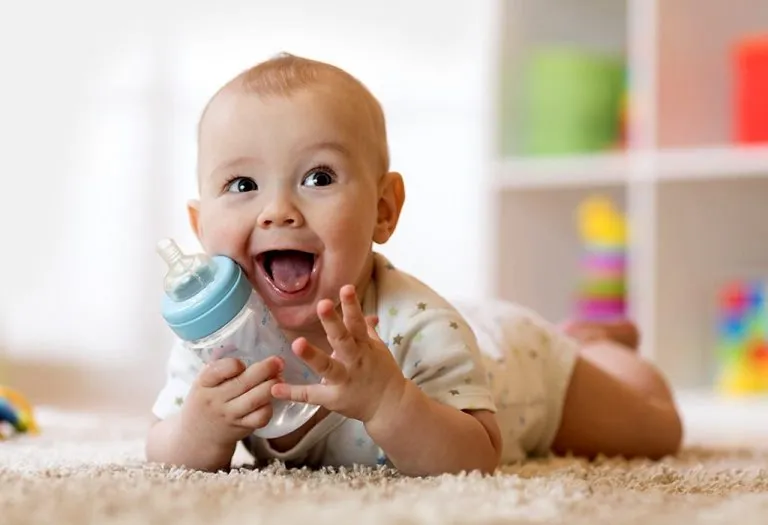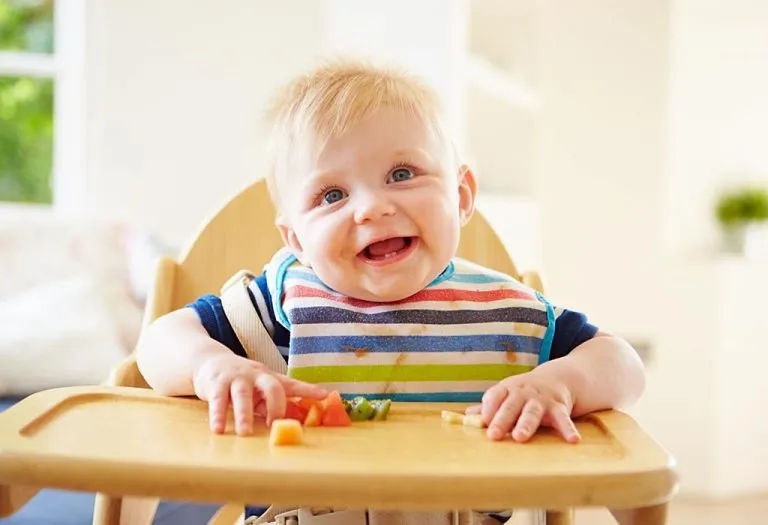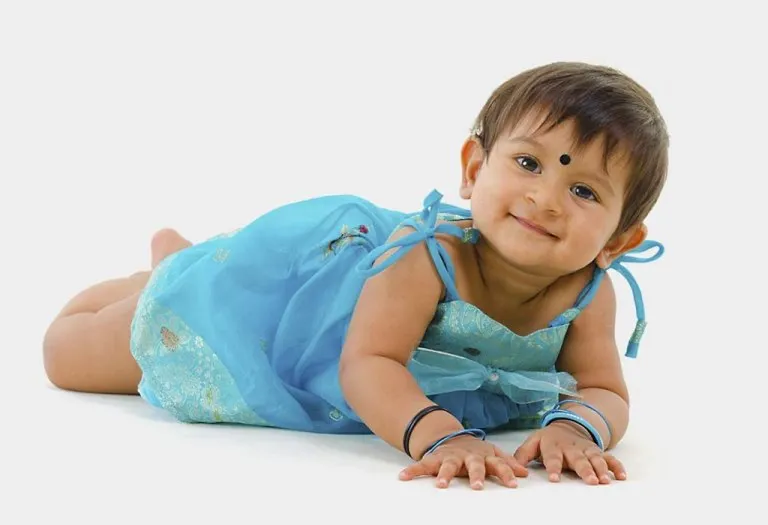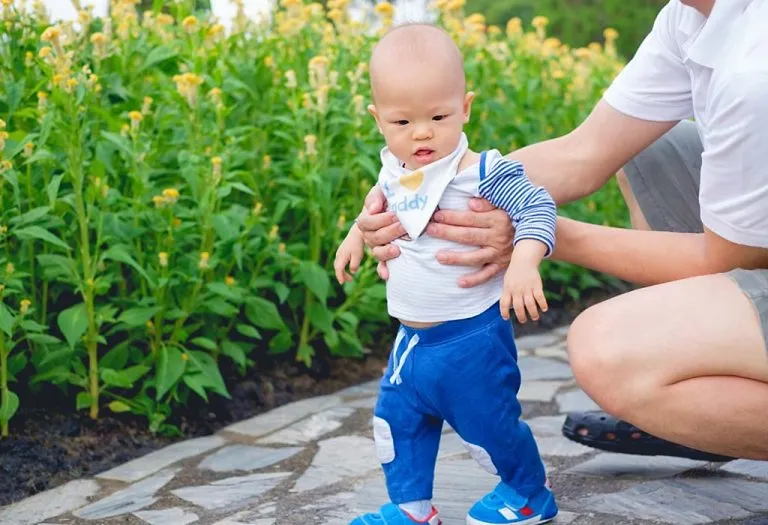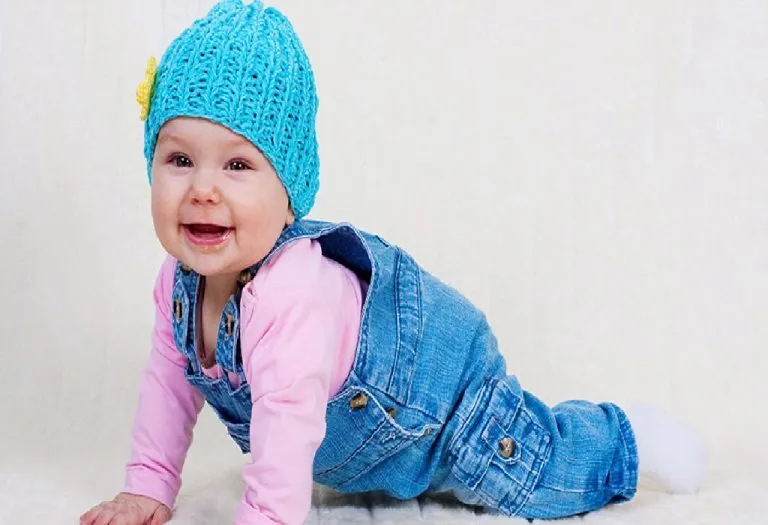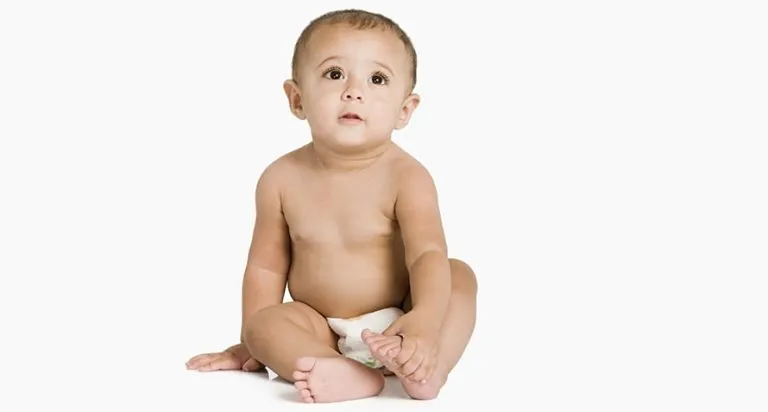When Do Babies Eyes Change Color?

- What Eye Color Are Babies Born With?
- Are All Babies Born With Blue Eyes?
- How Does Eye Color Develop in Newborns?
- Why Do a Baby’s Eyes Change Color?
- When Does a Baby’s Eye Color Change?
- What Determines an Infant’s Eye Color?
- What Color Eyes Will Your Baby Have?
- What If Your Baby Has Two Different Colored Eyes?
- Newborn Eye Color Predictor
- When to Call the Doctor
- FAQs
As a new parent, you can never get tired of gazing into your baby’s beautiful eyes. But do you know that your baby’s eyes in a pretty shade of brown may not always remain that way? His eye color may look different when he turns 3 months, 6 months, or even 12 months of age. Get your fill gazing at those pretty brown because they may change soon enough. The color of a baby’s eyes may change up to 1 year, while in some babies, the colour may not change until they turn 3 years of age. The baby eye color changes are part of the natural development process, and many parents are fascinated to see how their little one’s eye color evolves over time.
What Eye Color Are Babies Born With?
Most babies are born with blue or gray eyes, regardless of their parents’ eye color. This is because the melanin, the pigment responsible for eye color, is not fully developed at birth. Over time, as the baby is exposed to light, melanin production increases, and the infant eye color can change, typically between 3 to 12 months. Babies with darker skin tones may already have brown or dark-colored eyes at birth due to higher melanin levels, but their eyes may still undergo slight changes in shade as they grow.
Are All Babies Born With Blue Eyes?
No, not all babies are born with blue eyes. While many babies are born with blue or gray eyes, especially those of lighter skin tones, some babies are born with brown or dark-colored eyes, particularly those with darker skin tones. The eye color of a baby depends on the amount of melanin in the iris. Babies with less melanin may initially have blue or gray eyes, but the eye color can change over time as melanin production increases. For babies with more melanin, their eyes may appear brown or dark right from birth.
How Does Eye Color Develop in Newborns?
You can thank your genetics and your partner’s too for your baby’s eye color. A baby’s eye color is determined by the combination of his parents’ eye color. However, this amalgamation of the genes takes place in more than one ways. And while the color of your baby’s eyes may depend on the genetic reasons, you can’t thank your genes alone. Melanin may also play an active part in determining the eye color of your baby.
Why Do a Baby’s Eyes Change Color?
A baby’s eyes change color due to the gradual increase in melanin, the pigment responsible for eye color. At birth, most babies have blue or gray eyes because they have very little melanin in the iris. Over time, exposure to light triggers the production of melanin, which darkens the eyes. The eye color may continue to change for up to 1 year, and sometimes until the child is 3 years old. Genetic factors also play a role in determining the final eye color, with parents’ eye colors influencing how much melanin a baby’s eyes will produce.
When Does a Baby’s Eye Color Change?
The most significant changes in your baby’s eye color may be noticed between 6 to 9 months of age. This is because, by this time, there is enough pigment stored by the iris. You would also be able to the final hue of your baby’s eyes. But do not be surprised if your baby’s eye color keeps changing by the time he turns three years old. Though the darker shades of eyes remain dark and do not change. In around 10 per cent cases, the color of the eyes may keep changing in adulthood as well.
What Determines an Infant’s Eye Color?
The following determines the color of a baby’s eyes:
1. Melanin
Melanin plays an important role in determining the color of a baby’s eyes.
- Low production of melanin can cause a baby’s eye color to be grey, green, hazel, or blue.
- If there is more production of melanin, the baby may have a darker shade of eyes.
2. Genetics
- A baby, whose both parents have blue eyes, may have blue eyes too.
- A baby, whose both parents have brown eyes, may have brown eyes too.
- A baby, whose one parent has blue eyes and the other has green, may have either blue or green eyes.
- A baby, whose grandparents have blue eyes, may have blue eyes too.
- A baby who has different shades in both the eyes may be suffering from Waardenburg Syndrome.
The above mentioned are some possibilities that you may see in your newborn baby but is not necessary that this will only happen and your baby may have different colored eyes too.
What Color Eyes Will Your Baby Have?
It is often seen that babies whose parents have a darker shade of eyes may have dark eyes. Similarly, if both the parents have blue or green eyes, the baby may have blue or green eyes. In case one of the parents has lighter eyes and the other has a darker shade of eyes, the baby may have either colored eyes. The final or permanent color of your baby’s eyes may become clear by the time he turns nine months of age, but in some babies, the color may not change up until 3 years of age.
A baby may also have different colored eyes if he has a rare genetic disorder. However, if you notice any change in your baby’s eye color, you may get in touch with your doctor to know more about the same.
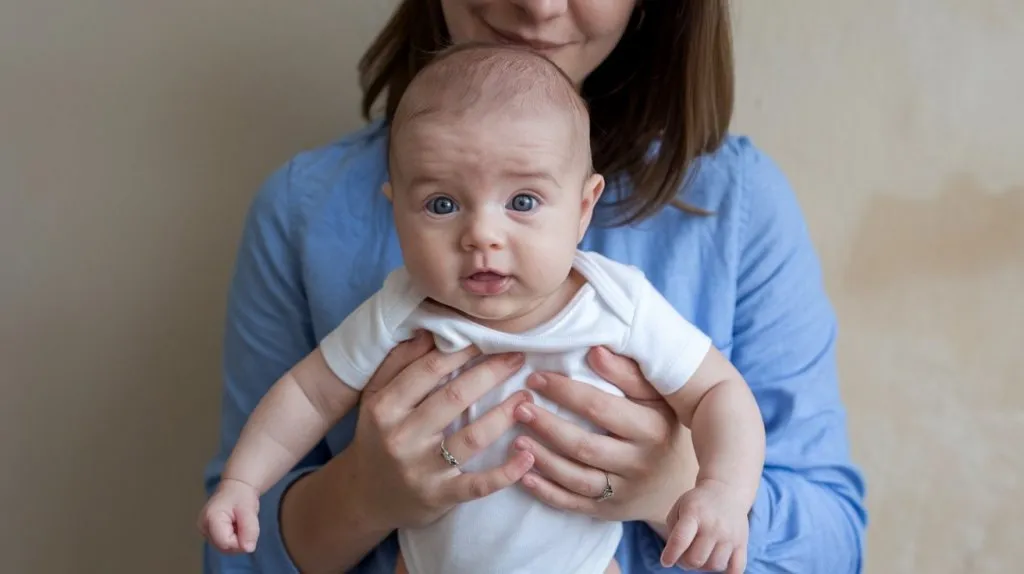
What If Your Baby Has Two Different Colored Eyes?
Sometimes a baby may have two different colored eyes. This may happen in following conditions:
- Waardenburg Syndrome: This is a genetic abnormality that may affect the color of baby’s skin, hair and even eyes. Babies who are born with this genetic mutation may have different colored eyes. In some cases, the babies who are born with this defect may even have hearing loss.
- Heterochromia Iridium and Heterochromia Iridis: This defect may cause two different colored eyes or multi-colored eyes in babies. This condition may be caused due to gene mutation or excessive pigmentation in the irises. Such defects may also result due to certain medication or trauma that the baby may experience at the time of the birth.
The treatment for the above-mentioned conditions may vary as per the symptoms. In case your baby is diagnosed with heterochromia then there is no need to worry as this condition is not harmful and does not require any treatment. However, if there is inflammation or swelling along with this condition, then it becomes necessary to reduce the inflammation and treat heterochromia after that.
In case, where the child has a vision impairment or the child is unable to see from one eye, tinted contact lenses may be advised by an eye specialist. The contact lenses thus prescribed may help lighten the complexion of a dark-eye or darken the complexion of a lighter eye. If difficulty is experienced in wearing a single contact lens, lenses may get prescribed for both the eyes.
However, if you decide not to treat this condition in your child, you may do so. There are many people living a healthy life with this eye condition. But if you or your child feels the need to use tinted lenses, you may do so.
Newborn Eye Color Predictor
When a baby is born, their eye color may be a mystery, as it can change over time. While there’s no exact science to predicting the final eye color, several factors influence the likelihood of certain colors. Here are some key points to consider when predicting a newborn’s eye color:
- Genetics: The eye color of both parents plays a significant role in determining the baby’s final eye color. A mix of genes from both parents influences how much melanin is produced.
- Light or Dark Skin Tone: Babies with darker skin tones are more likely to have brown eyes from birth, while babies with lighter skin tones often start with blue or gray eyes.
- Eye Color Changes Over Time: Most babies’ eyes start out blue or gray and may change to green, hazel, or brown within the first year as melanin production increases.
- Inherited Traits: If both parents have blue eyes, the baby is more likely to have blue eyes, but if one or both parents have brown eyes, the chance of brown eyes is higher.
- Environmental Factors: While genetics are the primary factor, environmental factors such as the amount of sunlight exposure can also slightly influence baby eye color changes over time.
When to Call the Doctor
While most changes in a baby’s eye color are natural and occur as they grow, there are certain situations where the newborn eye color progression doesn’t follow the typical pattern, and you should consult a doctor. Here are some signs that may require medical attention:
- Persistent Cloudiness or White Color: If your baby’s eyes appear cloudy or white rather than clear, it could indicate a condition like cataracts, which requires medical evaluation.
- Redness or Discharge: If your baby’s eyes are consistently red, swollen, or producing excessive discharge, it could be a sign of an infection, such as conjunctivitis.
- Crossed or Misaligned Eyes: If your baby’s eyes appear misaligned or crossed, it could be a sign of strabismus, a condition where the eyes do not work together properly.
- No Change in Eye Color: If your baby’s eyes remain an unusual color (such as very dark or very light) beyond the typical time frame for eye color changes, it’s worth consulting a pediatrician to rule out underlying issues.
- Other Vision Concerns: If you notice your baby is not tracking objects or seems unusually sensitive to light, it may indicate vision problems and a doctor should be consulted.
FAQs
1. Do premature babies have different eye color changes?
Premature babies may experience a slower eye color change, as their melanin production may not be fully developed at birth. However, they will generally follow the same pattern of eye color progression as full-term babies, with their final eye color becoming more apparent after several months.
2. Can a baby’s eye color change dramatically within a few days?
In some rare cases, a baby’s eye color can change dramatically within just a few days after birth. This rapid change often happens due to fluctuations in melanin production, which may cause a noticeable shift from blue or gray to green, hazel, or brown.
3. Can a baby’s eye color change due to illness or medication?
Although it’s uncommon, certain illnesses or medications can affect eye color in babies. For example, jaundice (yellowing of the skin) or certain medications prescribed during infancy may cause the iris to appear different in hue, although the color typically normalizes once the condition is treated.
4. Can a baby’s eye color be affected by the amount of breast milk they consume?
An unusual theory suggests that a baby’s eye color could be slightly influenced by the nutrients in breast milk, such as vitamins and minerals. While there is no scientific evidence to support this claim, some believe that the quality of nutrition during the first months could play a minor role in eye pigmentation.
A baby’s eye color may undergo considerable changes within a year and even later, if you notice something unusual, you can always talk to a paediatrician to clear your doubts. It is also recommended to have regular eye-checkups for your baby, to rule out any complications that may arise.
References/Resources:
1. What Color Will My Baby’s Eyes Be?; American Academy of Pediatrics; https://www.healthychildren.org/English/ages-stages/baby/Pages/Newborn-Eye-Color.aspx
2. Ludwig. C, Callaway. N, Fredrick. D, et al.; What colour are newborns’ eyes? Prevalence of iris colour in the Newborn Eye Screening Test (NEST) study (Acta Ophthalmologica); Wiley Online Library; https://onlinelibrary.wiley.com/doi/10.1111/aos.13006; April 2016
3. Why Are Brown Eyes Most Common?; American Academy of Opthalmology; https://www.aao.org/eye-health/tips-prevention/why-are-brown-eyes-most-common
4. Why Are My Eyes Changing Color?; American Academy of Opthalmology; https://www.aao.org/eye-health/tips-prevention/why-are-my-eyes-changing-color
5. Eye Colors; Cleveland Clinic; https://my.clevelandclinic.org/health/articles/21576-eye-colors
6. Mackey. D; What colour are your eyes? Teaching the genetics of eye colour & colour vision. Edridge Green Lecture RCOphth Annual Congress Glasgow May 2019 (Eye); Nature.com; https://www.nature.com/articles/s41433-021-01749-x; August 2021
7. White. D, Rabago-Smith. M; Genotype–phenotype associations and human eye color (Journal of Human Genetics); Nature.com; https://www.nature.com/articles/jhg2010126; October 2010
Eye Problems in Babies
Watery Eyes in Babies
Sticky Eyes in Newborn Infants
Dark Circles Under Baby’s Eyes
Baby Eyes Rolling Back – Is It Normal?
Was This Article Helpful?
Parenting is a huge responsibility, for you as a caregiver, but also for us as a parenting content platform. We understand that and take our responsibility of creating credible content seriously. FirstCry Parenting articles are written and published only after extensive research using factually sound references to deliver quality content that is accurate, validated by experts, and completely reliable. To understand how we go about creating content that is credible, read our editorial policy here.







